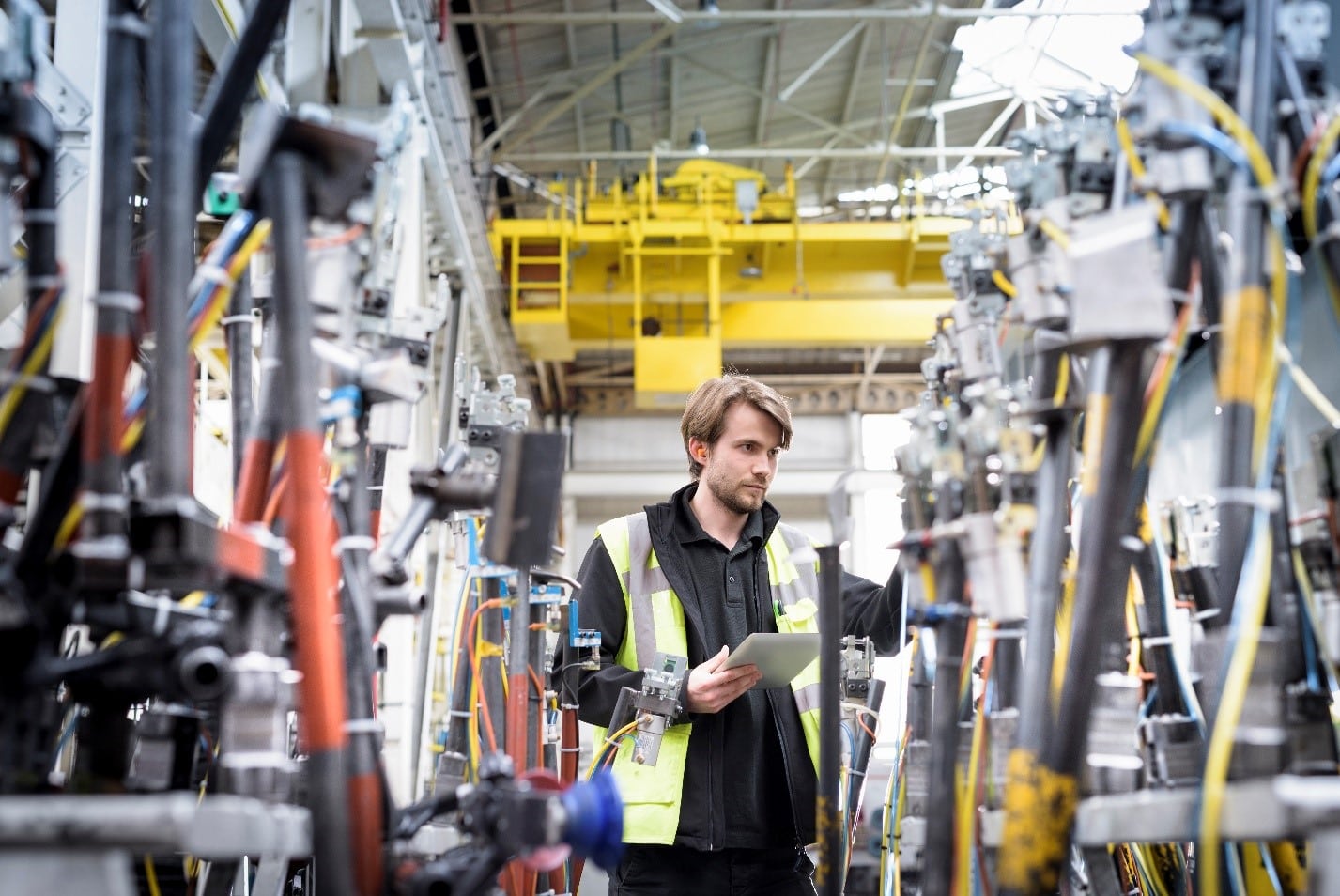
Uptime is a critical component in all types of manufacturing. Preventive maintenance can help maximize uptime, but even necessary maintenance can be wasteful when it’s performed inefficiently. A lean maintenance approach reduces waste and inefficiencies in equipment maintenance, resulting in more uptime and cost savings.
What is Lean Maintenance?
Lean maintenance aims to find time, money, and supply savings by reducing maintenance costs. It methodically examines all steps of the maintenance process to maximize efficiency, iterating process changes as needed. Instead of just looking at total uptime, lean maintenance involves taking a hard look at each of the processes involved in maintenance.
Implementing lean maintenance principles allows your organization to avoid wasting internal resources while still providing excellent products or services to your clients. It reduces asset downtime, increases productivity, and reduces waste throughout your organization.
Examples of Lean Maintenance
Organizations can implement lean maintenance tools throughout all existing maintenance processes. Here are just a few examples of how to implement lean maintenance principles:
Lean Preventive Maintenance
Preventive maintenance is a pillar of excellent asset management, but shutting down equipment before you have all the required parts to perform the maintenance causes unnecessary waste. Ensuring that the preventive maintenance is necessary and on the correct schedule for the asset avoids wasted downtime. Additionally, making sure all parts and tools are on hand and that the correct personnel are available minimizes required downtime. Once you’ve established a lean preventive maintenance program, predictive maintenance is the next step towards improving the leanness of your operation.
Lean Total Productive Maintenance
Lean maintenance doesn’t mean cutting corners unnecessarily. It does mean that everything is running on schedule and works efficiently. This involves getting employees throughout the organization on board with lean maintenance strategies. Noticing and addressing issues before they cause unexpected disruption is one way machine operators can take ownership of their equipment and implement lean maintenance practices. Avoiding excess production – which comes with material costs, wear and tear on equipment, and storage costs – is another area where lean maintenance techniques can be implemented.
Lean Maintenance in Motion
Organizations have more moving parts than just those in their machines. Lean maintenance in motion includes moving tools, parts, and people to the proper location for maintenance and minimizing any wasted motion. A well-organized tool system, accurate and methodical parts inventory, and reducing wasted time for employees traveling between machines or warehouses can all result in time and cost savings for organizations.
Lean Organizational Strategies
Strategies can be implemented throughout the organization to increase efficiency. For example, maintenance is more efficient when employees have accurate work orders that are easy to access and contain thorough information about the work. An effective work order management system can automate work orders for planned maintenance, saving time scheduling and ensuring all needed maintenance is performed on time.
Benefits of Lean Maintenance
The entire organization, including everyone from office managers to machine operators and customers, can benefit from lean maintenance principles.
Cost Savings
Increasing uptime and decreasing maintenance costs results in less waste and more cost savings. Lean maintenance makes it more likely you’ll have the correct tools and parts on hand and be able to perform maintenance efficiently, avoiding unexpected downtime and reducing the need for emergency maintenance.
Time Savings
Inefficiencies in processes mean your employees are spending less time using their expertise. Instead of doing the work they’re excellent at, they’re sifting through tools, looking for misplaced parts, traveling between workstations, or performing any number of tasks that don’t add value. Lean maintenance practices eliminate these inefficiencies so your employees can focus on their areas of expertise.
Employee Satisfaction and Retention
When employees are frustrated and unable to work well and efficiently, this can lead to a loss of productivity and reduced satisfaction, both of which can cause employee burnout and turnover. Implementing lean maintenance procedures allows your employees to have more autonomy in their work, take ownership, and spend more time using their specific skill set.
Equipment Savings
Inefficient equipment can cause wear and tear on parts, reducing equipment longevity. Lean maintenance management can help catch these inefficiencies so they can be addressed before they cause a major problem.
Lean Maintenance Tools
Some lean maintenance practices will need to be added over time as your team searches for inefficiencies and iterates ideas to reduce or eliminate those inefficiencies. However, there are also many tools and processes your business can use to accelerate your lean maintenance journey.
- Predictive maintenance tools like vibration sensors and computerized maintenance management system (CMMS) software can assist your team in catching potential issues before they cause unexpected downtime.
- Work order management simplifies the creation and completion of work orders, letting your team spend less time on paperwork and more time working.
- Parts inventory management ensures your workers have the right parts in the right place at the right time, minimizing downtime and increasing efficiency throughout your organization.
Lean maintenance repair and overhaul involve multiple components. A CMMS like eMaint offers a comprehensive solution for taking control of your lean maintenance management, moving your company toward a leaner, more efficient future.
